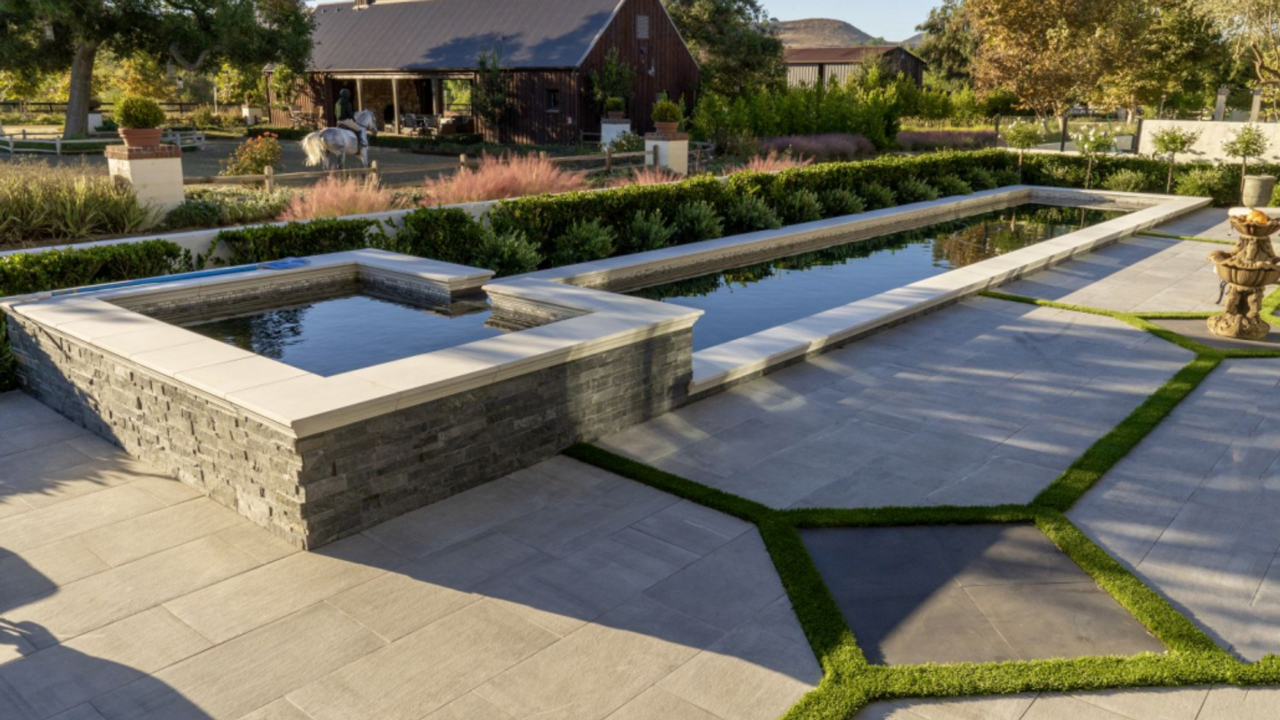
When it comes to transforming your outdoor space into a serene oasis, few elements can rival the enchanting allure of a pond. The gentle glistening of water, the vibrant aquatic life, and the soothing sounds of trickling streams can elevate your garden to a whole new levelA level is a tool used to determine whether a surface is horizontal (level) or vertical (plumb). It ... of beauty and tranquility.
To achieve this, many homeowners turn to the harmonious combination of a retaining wall and a backyard pond. Below, we'll explore the art of creating a stunning pond with a retaining wall, unveiling the steps to design, build, and maintain this captivating water feature.
Before we delve into the specifics of retaining wallsRetaining walls are structures designed to hold back soil and prevent erosion in landscapes with var..., it's essential to appreciate the charm and benefits of a backyard pond. A well-designed pond can be the focal point of your outdoor space, drawing attention and admiration from guests and passersby alike.
Here are some compelling reasons to consider adding a pond to your landscape:
A pond instantly enhances the visual aesthetics of your garden. The shimmering water surface, lush aquatic plantsAquatic plants are species that thrive in water environments, making them ideal for ponds, water gar..., and the possibility of adding colorful koi fish create a captivating focal point.
The gentle sound of flowing water has a calming effect, providing a serene atmosphere for relaxation and meditation. A pond can be your private retreat from the hustle and bustle of daily life.
Ponds support a thriving ecosystem. Aquatic plants, fish, and other wildlife contribute to the natural balance of your garden, fostering biodiversity.
A well-maintained pond can significantly boost your property's value. It's an attractive feature for potential buyers who appreciate the beauty and tranquility it offers.
Now that we've established the allure of ponds, let's discuss the importance of retaining walls in their creation. Retaining walls serve as both functional and aesthetic elements when constructing a pond. Here's how they come into play:
Designing a pond with a retaining wall involves careful planning and consideration of various elements. Here are the key steps to bring your vision to life:
Choose an appropriate location for your pond. Consider factors like sunlight exposure, accessibility, and visibility from your home.
Determine the dimensions and shape of your pond. Oval, kidney-shaped, and rectangular ponds are common choices, but you can get creative with custom shapes.
Select the type of retaining wall that suits your design and budget. Common options include natural stone, concreteConcrete is a composite material made from a mixture of cement, sand, gravel, and water. It is one o... blocks, or custom-built walls.
Dig the pond hole, keeping in mind the depth you desire. This is also the time to shape any tiers or levels if you're going for a multi-level pond.
Install a durable pond liner to prevent water leakage. Ensure it covers the entire pond area, including the walls.
Construct the retaining wall around the perimeter of the pond. Ensure it's level and stable, as it will bear the weight of the water and soil.
Enhance your pond with water features like fountains, waterfalls, or bubbling rocks. These not only add visual interest but also improve water circulation and aerationAeration is the process of perforating the soil with small holes to allow air, water, and nutrients ....
Introduce aquatic plants like water lilies and submerged vegetation to enhance the natural beauty of your pond. If desired, add fish like koi or goldfish for a lively underwater ecosystem.
Illuminate your pond with underwater or landscape lightingLandscape lighting enhances the safety, functionality, and beauty of outdoor spaces by illuminating ... for a stunning nighttime ambiance. Complete the look with carefully chosen landscaping elements.
To keep your pond in top condition and enjoy its beauty for years to come, regular maintenance is essential. Here are some maintenance tasks to consider:
While creating a pond with a retaining wall can be a rewarding DIY project, it's also advisable to consult a professional hardscape contractor or a landscape designer. Their expertise can help you navigate the design and construction process, ensuring that your pond is not only stunning but also built to last.
In conclusion, a pond with a retaining wall is a captivating addition to any outdoor space, providing visual appeal, tranquility, and ecological benefits. With careful planning, quality materials, and regular maintenance, your pond can become the centerpiece of your garden, where you can relax and connect with nature.
Ready to turn your pond dreams into reality? Contact West Hills Masonry, your trusted hardscape contractor, to explore creative pond design ideas and bring the beauty of water to your outdoor oasis.
 Carlos Gonzales
Carlos GonzalesLocations We Serve
Schedule A Consultation